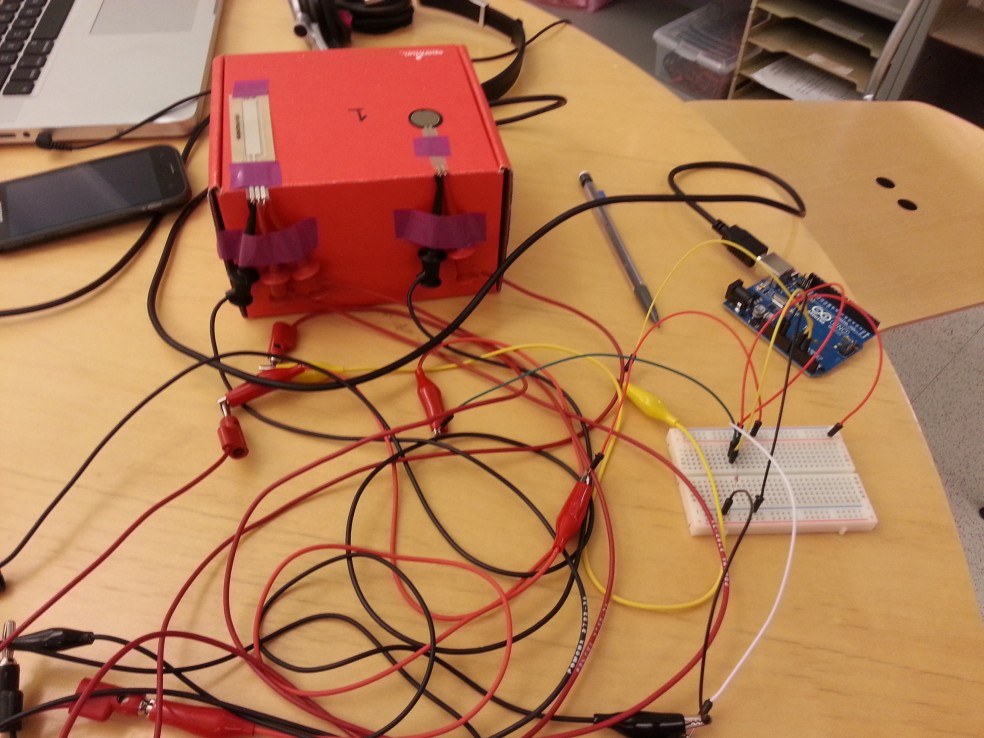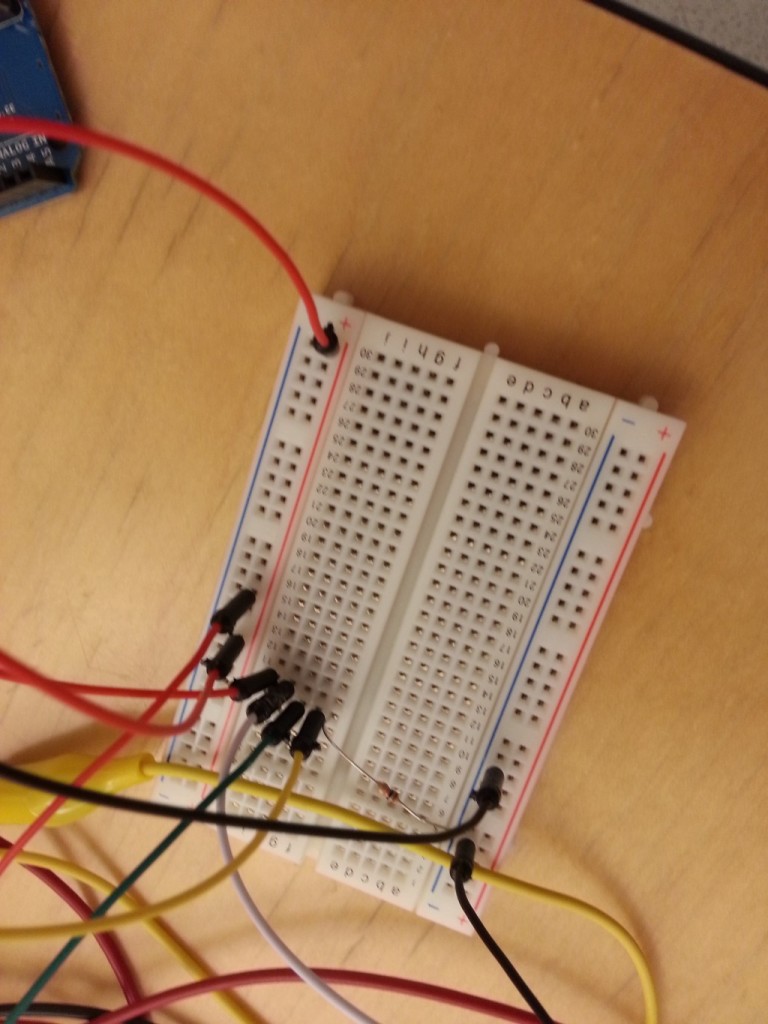Ideas and Sketches
- Squat Coach – Detects the depth of your squats and assesses your form.
Flex sensor is positioned to run up the back of knee joint - Etch-A-Sketch – Arduino version of Etch-A-Sketch game.
Users control stylus with 2 rotational potentiometers - Adaptive Lighting – LED changes brightness depending on lighting of room.
Photo cells connected to LED vary brightness of light emission based on surrounding light - SoundBox – Musical instrument with a simple interface for intuitive interaction and immediate results.
Users can control amplitude with FSR (force sensing resistor) and pitch with slider
We decided to choose idea #4. While we liked our other ideas, we felt creating a SoundBox would be the most feasible and rewarding endeavor.
Project Description
We built a musical instrument, called the “SoundBox”. The “SoundBox” allows users to create notes by applying pressure to a force sensing resistor. The amount of pressure applied determines the volume of the note and users can control the pitch of each note they create with a SoftPot Membrane Potentiometer (slider). When users create notes, a python program reads the incoming signals from the USB port (which the Arduino is speaking to). Our python program then feeds these signals to ChucK, an audio programming language, which then creates the sounds you hear. We are definitely pleased with the result of our project. The intuitive and simple nature of the “SoundBox” interface allows any user to create a variety of sounds and patterns. Thus, in giving the gift of music (albeit limited) to users, we feel that our project is successful. One thing we could certainly improve is the limited functionality of our “SoundBox”. For example, we could add a switch to the Arduino which would enable users to toggle through ChucK instruments (as of now the default instrument is the mandolin). Furthermore, we could add multiple sliders to enable users to play multiple notes at once. What’s more, we could speak to any MIDI receiving Audio Software, such as Ableton Live or Logic (which have extensive sound libraries), to fashion sounds out of user input. As such, there is definitely a lot of room for improvement in our design, which would seriously enhance the functionality of the “SoundBox”.
For more detail: Creating A SoundBox Using Arduino


